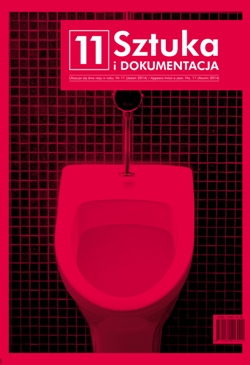»Obraz tym się różni od pilnika, że jest w użyciu wszechstronniejszy« lub Andrzej Wróblewski na nowo odczytany.
»The difference between a metal fi le and a painting is that a painting is more versatile in its use«: rereading Andrzej Wróblewski.
Author(s): Wojciech SzymańskiSubject(s): Fine Arts / Performing Arts
Published by: Akademia Sztuk Pięknych w Gdańsku
Keywords: Andrzej Wróblewski; „Unikanie stanów pośrednich”; twórczość pisarska malarza; romantyzm; autotanatografia; Romanticism; autothanatography
Summary/Abstract: The paper has been inspired by the publication of Avoiding Intermediary States, i.e. the latest volume dedicated to the life and work of Andrzej Wróblewski and simultaneously, the fi rst critical catalogue of his work. The fi rst part of the paper considers the book vis-à-vis other attempts to interpret and re-evaluate Wróblewski’s art which have been undertaken by Polish art history and criticism over the last twenty years. The second part problematizes both Wróblewski’s oeuvre and its subsequent reception in the context of his three pieces (a short story, a diary and a theoretical treatise on painting) published for the fi rst time in Avoiding Intermediary States and thus made available to researchers. The paper off ers an in-depth analysis and interpretation of the pieces and consequently discusses them by referring to the concepts of “dissevered” and dis-continued subjectivity (identity) of a creator and autothanatographic phantasm, which are juxtaposed with the Romantic notions of despair and irony (S. Kierkegaard and W. von Kleist). A Romantic impulse identifi ed in Wróblewski’s oeuvre is then confronted with an attempt to link it to the Polish Romantic tradition (i.e. national liberation and Messianism). The paper concludes with the following postulate: the ideas of identity and autothanatographic phantasm identifi ed in Wróblewski’s pieces should be applied to a series of paintings entitled Execution (1949) which may lead to modifi cation of previously formulated claims and hypotheses.
Journal: Sztuka i Dokumentacja
- Issue Year: 2014
- Issue No: 11
- Page Range: 115-124
- Page Count: 10
- Language: Polish

